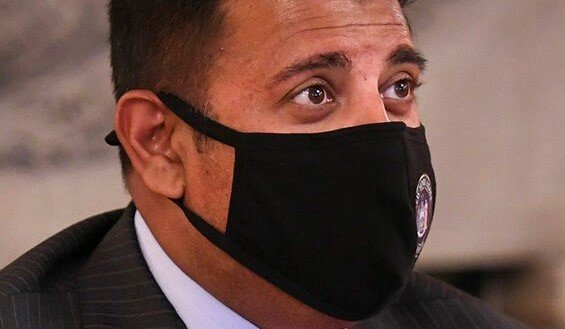
California Indian American Teen Ishan Jain Researching Novel Tool to Diagnose Heart Failure
Ishan Jain’s approach aims to serve patients from low-income and underprivileged backgrounds that simply do not have access to a clinical environment or healthcare resources for an instant diagnosis. (photo provided)
India-West Staff Reporter
An Indian American high school senior in Northern California, Ishan Jain, has researched a novel deep learning approach to assessing cardiac function and diagnosing heart failure at an early stage.
Jain, a senior in California-based Mission San Jose High School, won multiple science fairs at the international level and published a manuscript for his work involving an end-to-end pipeline using deep learning to assess cardiac function, according to an email sent to India-West.
“The idea came from when I learned about the annual casualties caused by heart failure,” Jain explained.
“Knowing people personally who have suffered from cardiomyopathy, I wanted to create an accurate, fast, and easily accessible tool for diagnosing heart failure,” he added.
His deep learning pipeline surpasses human performance in tasks of segmenting the left ventricle, estimating ejection fraction (a denotation of cardiac function), and assessing cardiomyopathy, notes the email.
“Despite years of training, human assessment of cardiac function has considerable human-to-human heterogeneity,” Jain stated.
“Such variance and discrepancies across heart failure diagnosis demonstrate a clear indication of false assessment that can be a leading cause of why we see so many casualties,” he added.
His approach aims to serve patients from low-income and underprivileged backgrounds that simply do not have access to a clinical environment or healthcare resources for an instant diagnosis.
“Oftentimes, patients receive diagnosis and treatment when the heart has already faced irreversible damage due to cardiotoxicity, demonstrating the importance of early and accurate treatment,” Jain noted.
These individuals from low-income and underprivileged backgrounds can now receive access to a sustainable and easily accessible tool that can quantify ejection fraction without any costs or significant clinical resources.
His findings also summarized the human error found during a traditional clinical workflow.
“As part of my research, I found that in certain steps of the diagnostic process, procedures such as tracing the left ventricle and identification of the mitral valve annulus have large errors when compared to the ground truth values, also demonstrating the need for a standard quantifiable approach for diagnosing patients.”
With his project, Jain was also able to win research and science competitions at the international and national levels. He qualified as a finalist in the most prestigious science fair competition in the world, the Regeneron International Science and Engineering Fair. In addition, he also was awarded the top 12 projects in the Junior Science and Humanities Symposia in the state of Northern California and qualified as one of the top 28 finalists in the BioGENEius competition from the San Francisco Bay Area.
Aside from competitions, Jain published his work at JAMA Cardiology, one of the largest peer-reviewed cardiology journals in healthcare and medicine. He was also awarded the top 35 abstract submissions to present at the American Society of Echocardiography, a conference for physicians, cardiac sonographers, nurses, and scientists involved in echocardiography.
“I am truly honored and proud of these accomplishments, but I am more elated by the fact that my solution is able to be recognized in the field of science and healthcare,” he says.
This summer, Jain continued his love for deep learning to bolster the field of cardiology and sustainable healthcare. He researched strain analysis, an early indication and sensitive measurement for cardiac function assessment.
“As I am in the last stages of my latest strain research, I aspire to publish my findings in strain analysis and make an impact towards sustainable healthcare around the world.”
“In the future, I hope to keep developing novel tools to improve medicine and assist patients who struggle with day-to-day medical issues,” he concluded.




